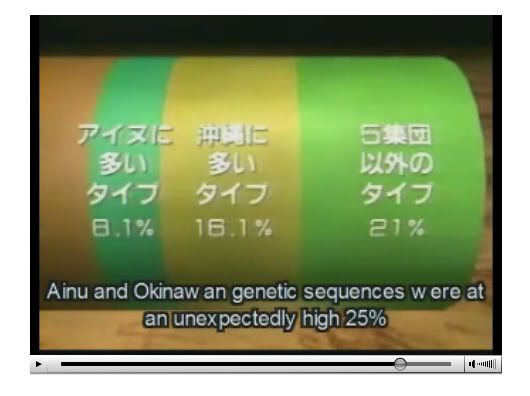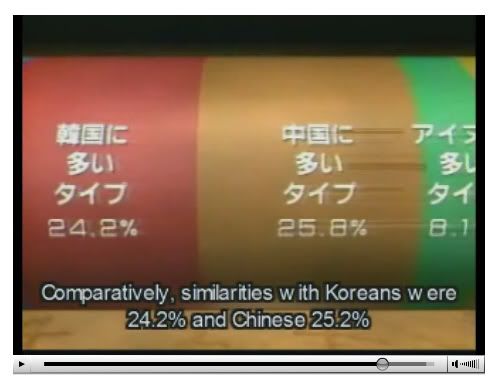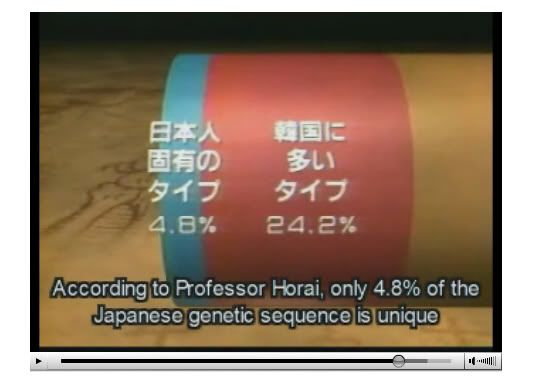


Notice: This is the official website of the All Empires History Community (Reg. 10 Feb 2002)
The genetic sequences of Japanese. |
Post Reply 
|
Page <123 |
| Author | |
Guests 
Guest 
|
 Quote Quote  Reply Reply
 Topic: The genetic sequences of Japanese. Topic: The genetic sequences of Japanese.Posted: 10-Oct-2008 at 16:23 |
You're using wikipedia as a source... The haplogroup C3 (original C3) found in Korea that occurs at a modal of 15%, originated in North Asia. The haplogroup C3a found in Japan at a frequency of 3% has more similarities with southern groups of haplogroup C3. Frequency of haplogroup C3 is higher in northern Chinese than southern Chinese. It's interesting to know that Koreans possess the original hap. C3 marker found also in Mongolians and Tungusics, while other East Asian groups only possess subclades of hap. C3, such as C3a (Japanese) and C3d (Chinese). |
|
 |
|
Guests 
Guest 
|
 Quote Quote  Reply Reply
 Posted: 10-Oct-2008 at 16:26 Posted: 10-Oct-2008 at 16:26 |
It's then true that the Japanese are a mixture of Chinese, Korean and Jomon. |
|
 |
|
hoihoi31 
Immortal Guard 
Joined: 29-Jan-2009 Online Status: Offline Posts: 0 |
 Quote Quote  Reply Reply
 Posted: 07-Feb-2009 at 07:14 Posted: 07-Feb-2009 at 07:14 |
|
the Japanese by method of Mitochondrial DNA
http://en.wikipedia.org/wiki/Mitochondrial_DNA the korean and the Japanese are very simillar...( that is,matrilineal. mother lineage) ( Korean is not south korean. I mean korean who is living southern part of south korea like Pusan or kaya) korean is more similar with ainu than the Japanese Y Chromosome father lineage(paternal line) korean and the Japanese are quite different because of D(Yap+) most okinawan and Ainu have D(Yap+) Why is it so similar by the method of mitochondria, and is it very different by the method of the chromosome? only women came to Japan as Yayoi? I dont think so :p As for the movement in the group, men was more numerous . How about Latin America? How about example of the Pacific Ocean islands? How about India? After the 16th century, present Latin American nations were conquered by Spain and Portugal. It is chiefly men that came. As a result, there are a lot of Y chromosomes of the Caucasian lineage in Latin American nations. However,The Caucasian origin is few by mitochondria method most of type is native ppl' so are polynasia, Guam.... Aryan (one race of Caucasian) invaded India from Central Asia 3000 years or more ago, and the upper layer hierarchy was formed for India. As a result, there are many patrilineal more than the matrilineal... accoding to descendant Genghis Khan Research the Y chromosome goes over the cultural barrier by the occupation of the short term of around 100 and does not spread.. The ruler should be in the top in the society until race's uniting for long long time. Top management in the ancient society of which the Jomon people fused with Yayoi shows that the Jomon was farther more than Yayoi. In short, the Jomon people conquered the people village of Yayoi where it had emigrated with high probability Small number of people comparatively people who made the Jomon people an ancestor were in top management in the society, and people of a lot of yayoi were ruled. The pattern excluding this is impossible. |
|
 |
|
feiying 
Janissary 
Joined: 21-Feb-2009 Online Status: Offline Posts: 29 |
 Quote Quote  Reply Reply
 Posted: 21-Feb-2009 at 10:05 Posted: 21-Feb-2009 at 10:05 |
|
^Let me explain. Female genetics can stay the same but male genetics change due to migration and conquest
1) Originally both Korea and Japan was inhabited by Siberian people (Haplogroup C).
2) Later, Haplogroup D from Tibet was forced to immigrate to Japan because their ancestors were pushed away from China.
3) Southeast Asian people from southern China and Indonesia (rice farmers) migrated to Korea and Japan bringing with them Haplogroup O2b genetic marker.
4) Chinese in Yangtze and Yellow River area migrated to Korea and Japan bring with them O3 genetic marker and advanced civilization. Majority of the O3 markers in Japan belong to O3a5 marker, indicating most of them were Han Chinese.
|
|
 |
|
pebbles 
Baron 
Joined: 12-Oct-2008 Online Status: Offline Posts: 409 |
 Quote Quote  Reply Reply
 Posted: 21-Feb-2009 at 10:27 Posted: 21-Feb-2009 at 10:27 |
However,proto-Siberian remains as largest component of Japanese gene pool.Not the case for Korea peninsula because of later migrations from elsewhere.
|
|
 |
|
Post Reply 
|
Page <123 |
| Forum Jump | Forum Permissions  You cannot post new topics in this forum You cannot reply to topics in this forum You cannot delete your posts in this forum You cannot edit your posts in this forum You cannot create polls in this forum You cannot vote in polls in this forum |
Copyright ©2001-2009 Web Wiz
This page was generated in 0.105 seconds.











 Printable Version
Printable Version Google
Google Delicious
Delicious Digg
Digg StumbleUpon
StumbleUpon Windows Live
Windows Live Yahoo Bookmarks
Yahoo Bookmarks reddit
reddit Facebook
Facebook MySpace
MySpace Newsvine
Newsvine Furl
Furl Topic Options
Topic Options

